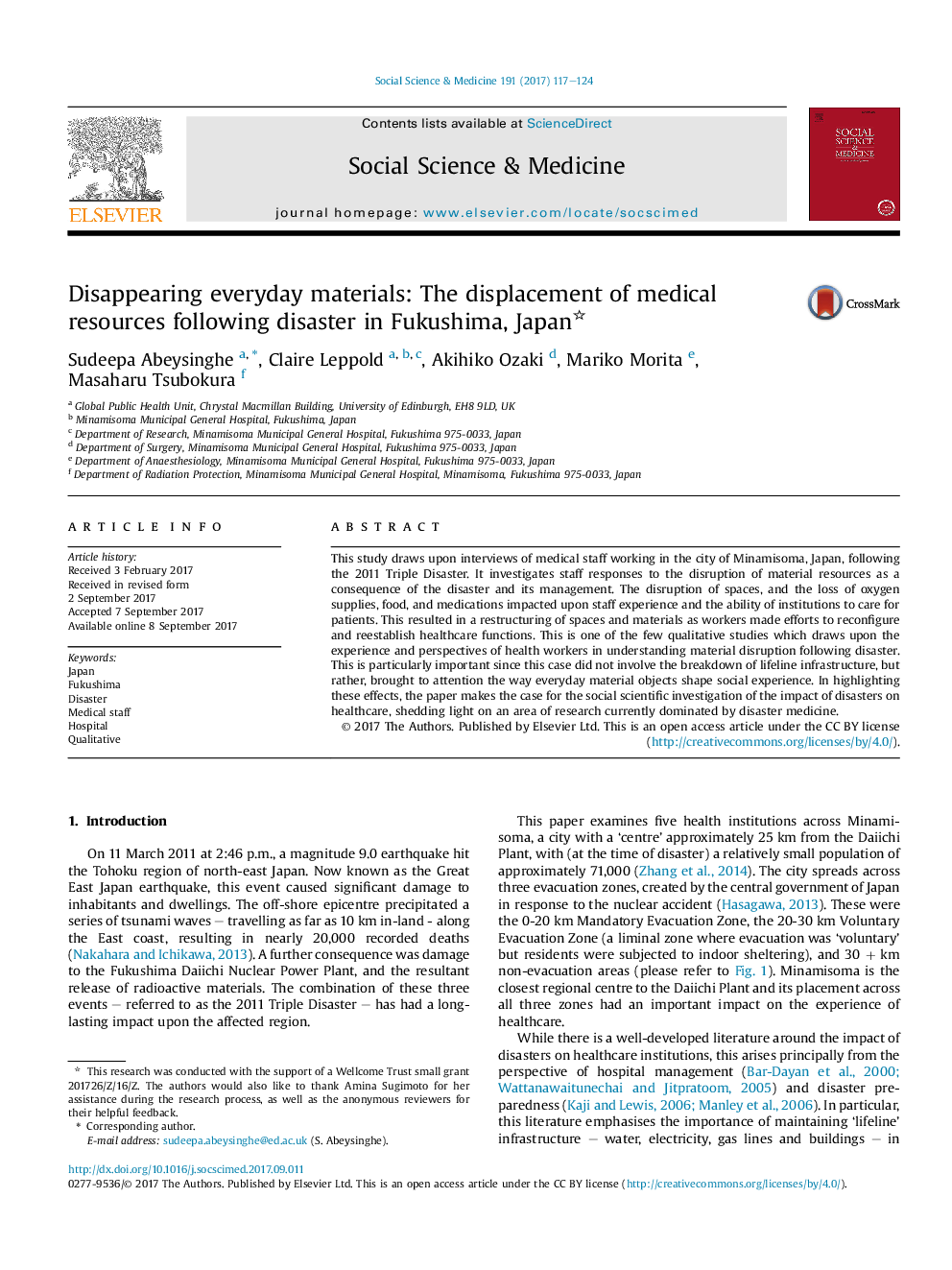| Article ID | Journal | Published Year | Pages | File Type |
|---|---|---|---|---|
| 5046295 | Social Science & Medicine | 2017 | 8 Pages |
â¢Examines staff experiences of post-disaster healthcare.â¢Documents key re-organizations of spaces and objects following disaster.â¢Notes the central role played by loss of hospital resources.â¢Relationship between health workers and the everyday objects of their workplace.
This study draws upon interviews of medical staff working in the city of Minamisoma, Japan, following the 2011 Triple Disaster. It investigates staff responses to the disruption of material resources as a consequence of the disaster and its management. The disruption of spaces, and the loss of oxygen supplies, food, and medications impacted upon staff experience and the ability of institutions to care for patients. This resulted in a restructuring of spaces and materials as workers made efforts to reconfigure and reestablish healthcare functions. This is one of the few qualitative studies which draws upon the experience and perspectives of health workers in understanding material disruption following disaster. This is particularly important since this case did not involve the breakdown of lifeline infrastructure, but rather, brought to attention the way everyday material objects shape social experience. In highlighting these effects, the paper makes the case for the social scientific investigation of the impact of disasters on healthcare, shedding light on an area of research currently dominated by disaster medicine.
